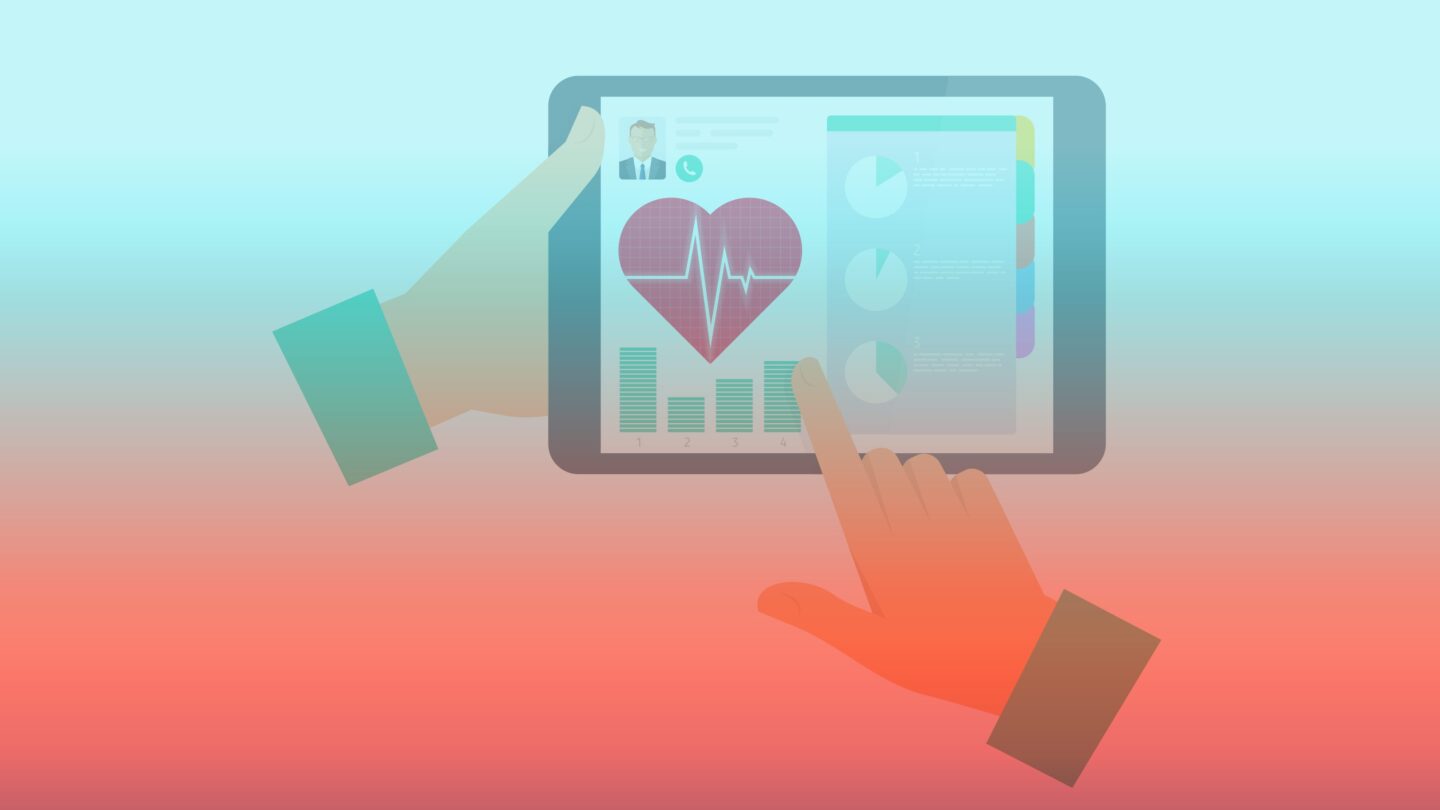
This week, we found out that Google’s AI Can Predict When A Patient Will Die. Super creepy, right?
Looking past the unnerving idea that technology could predict someone’s death, you realize that what’s happening with Google’s AI will actually positively contribute to human life. In a pilot program, researchers fed volumes of electronic health record data into a deep learning network. What they found was a surprisingly accurate picture of future outcomes. According to Futurism, “What can we do with this information, besides fear the inevitable? Hospitals could find new ways to prioritize patient care, adjust treatment plans, and catch medical emergencies before they even occur. It could also free up healthcare workers, who would no longer have to manipulate the data into a standardized, legible format.”
So, besides generating clickable, sci-fi inspired headlines, what can AI in healthcare do? In our third entry in the AI series, Money Evolved: AI and the Financial Industry, we addressed how artificial intelligence (AI) is shifting financial services to make personal finance even more personal. But AI in healthcare has set the stage to result in even more human influence and impact. That’s because we all touch and are touched by the healthcare system in our everyday lives, providing us with hope, healing and health. While AI’s impact on diagnosing, treating and managing illnesses may yet be its greatest benefit to humanity, since we are not trained medical doctors, technicians or researchers, we’ll stick to our area of expertise and evaluate AI from the lens of patient experience and healthcare delivery.
Streamlining Processes
While not as flashy as, say, robotic surgery, AI – when applied to the backend process in healthcare settings – could result in dramatic efficiencies. In fact, Accenture estimates AI saving the U.S. healthcare industry as much as $150 billion annually by 2026. Those savings are not necessarily because computers are directly replacing human labor – like a robot doctor or virtual nurse – but, rather, taking the place of a human practitioner. AI is allowing human doctors and nurses to spend less time on the rote, lower-functioning responsibilities of their roles and more time on the higher-functioning responsibilities. What that means in practice, for example, is that doctors don’t have to memorize as much information or sift through reams of data to get to the relevant material that will make a difference for their patient case.
This is healthcare’s version of automating the predictable aspects of business that we touched on in March. Given the endless stream of information, doctors can barely keep up with the latest medical literature. Now, programmed algorithms can scan relevant medical journals and organize, collate and filter the information rather than having to go digging for it. In the seminal work, Man-Computer Symbiosis, J.C.R. Licklider says, “About 85% of my ‘thinking’ time was spent getting into a position … to learn something I needed to know. Much more time went into finding or obtaining information than into digesting it … Several hours of calculating were required to get the data into comparable form. When they were in comparable form, it took only a few seconds to determine what I needed to know.”
Enhancing Care
Using AI allows physicians and nurses to strengthen their decision-making process by facilitating access to information. With AI, medical personnel spend far less time trying to find pertinent information and more time absorbing it, resulting in better informed practitioners who can spend more time on direct patient care. This will inevitably improve the practice of healthcare for the patient. That same type of efficiency can also be deployed for reading scans or test results. One study using AI to automatically scan lung radiographs of lung nodules resulted in speeds between 62% to 97% faster than a panel of technicians with the same accuracy rate. That means technicians can spend more time on more difficult cases rather than occupied with the volume of scans to complete.
In every healthcare setting, there is patient data and information overflowing from our medical charts. That hand-written data and the medical analysis have to end up in a patient’s electronic health record to coordinate care and to accounts payable. Given that this data is sensitive and largely unstructured – recorded by hand in a doctor’s script – much time and energy is focused on getting that information transferred electronically. Data-entry operations are overflowing at most medical practices. And staff spends nearly as much time preparing the data – getting correct diagnostic and billing codes and the like – as entering the data itself. Now, algorithms are able to take this messy, unstructured data and configure and categorize it far more quickly and efficiently than when completed by hand.
AI Powered Tools
One AI-based tool that is getting more and more traction in healthcare settings is voice-to-text apps that use natural language processing AI. Capturing notes and information stated on-the-fly and in real-time while providing digital transcription not only saves time and energy, but also allows doctors and nurses to go back and review their notes for anything they may have missed in the heat of the moment. Further, many estimates peg non-patient care as taking up to 50% of nursing time. Ordering prescriptions, tests and other repetitive tasks can be addressed by deploying an AI voice function. Again, this allows healthcare practitioners the time and space for the higher-level cognitive function and decision-making physicians and nurses need in order to provide the best patient care.
Other programs that address medical errors are also gaining traction in medical facilities. For example, dosing errors in hospital settings have remained a pressing issue for decades. Creating AI algorithms and formulas based on dosing norms and applying those programs to monitor dosage in the patient setting can help physicians, nurses and technicians catch medication errors that reduce patient outcomes or even result in life-threatening situations. Other AI programs are being developed to monitor the intersection of vital signs, blood levels, treatment, and patient response to catch warning signs even earlier, enabling medical staff to intervene and save lives. Medical scanning AI is growing in prominence to reduce false-positive and false-negative results and quickly get patients the treatment they need.
The Future of AI
Many articles are being written about the future of AI in the medical field – from robotic nursing assistants to suites of robotic surgeons. While these decidedly sci-fi futures surely play on human fascination and fear of a robotic future, there is an ever-growing role for AI within medicine and its potential is exhilarating. The Medical Futurist writes, “Concerning healthcare, artificial intelligence will redesign it completely – and for the better. AI could help medical professionals in designing treatment plans and finding the best suited methods for every patient. It might assist repetitive, monotonous jobs, so physicians and nurses can concentrate on their actual jobs instead of e.g. fighting with the tread-wheel of bureaucracy.”
In 10 Promising AI Applications in Health Care, the authors say, “As AI technologies become more prevalent, health care organizations will have to invest in those that deliver the most value. Uses of AI for clinical judgement still remains in its infancy… But the AI applications that can deliver the most value today… should be prioritized and invested in, so health care providers and insurers are free to focus on better care.” What is happening with AI today will write the future of AI tomorrow. Healthcare organizations and developers across the globe are identifying areas ripe for change, and creating AI to address real-life challenges. As more AI is tested in healthcare settings, AI gets better and better. After all, that’s what it’s designed to do – learn from its mistakes and build upon its successes.
To learn more about the impact of AI, read our full series: Harnessing Humanness, Future Facing, and Money Evolved. You can reach us at info@adrenalinex.com.



